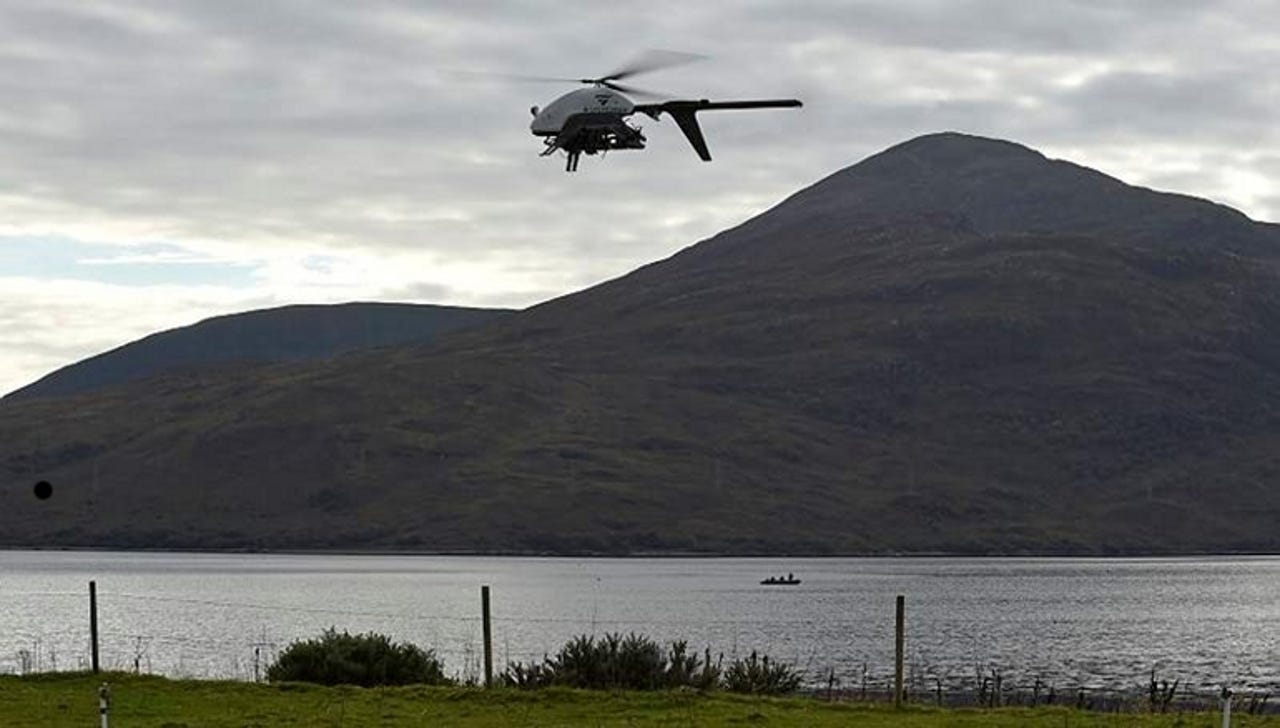Royal Navy tests robot subs, boats and drones for fleet of the future


A rotary wing unmanned air vehicle from the Space and Naval Warfare Systems Center, Pacific, lifts off as part of the first-ever Unmanned Warrior, a research and training exercise.
The Royal Navy is testing out more than 50 autonomous vehicles, including drones and submersibles in one of the largest demonstration of marine robotic systems.
Held off the coast of west Scotland and west Wales, the Unmanned Warrior event is a showcase for aerial, surface and underwater Maritime Autonomous Systems (MAS) from 40 companies. Demonstrations will include the use of autonomous vehicles for surveillance, intelligence-gathering and mine countermeasures.
The Royal Navy said that autonomous systems like this "could transform the way in which the armed forces of the future help keep Britain safe".
"From scouring the sea bed with sonar beams to watching the waves from above, these autonomous systems are diving, swimming and flying together, providing information that will be used to inform how future unmanned systems could help protect service men and women", the Royal Navy said.
Unmanned Warrior brings together industry, academia and defence partners including the US Navy to demonstrate the potential offered by maritime autonomous systems, within a wider UK-led NATO exercise called Joint Warrior.
So far Unmanned Warrior has tested out mine-hunting and hydrographic surveys using autonomous submersibles to record seabed features with a fixed-wing UAV acting as a communications link to mission control
"Mission commanders had brought nine autonomous systems on line, responding to each other, flying, swimming and diving together, but hard at different tasks, looking for different things," the Royal Navy said.
It has also looked at the use of drones for unmanned reconnaissance, as a significant issue is understanding and learning the best way of commanding and controlling many systems, each using different technology -- radar, multi-camera, infrared -- to spot different things.
Admiral Sir Philip Jones, First Sea Lord and Chief of Naval Staff, said: "Unmanned maritime systems will change how we operate, but they're just the start. Our pursuit of new technologies and ideas -- from big data to 3D-printing -- will ensure we remain one of the most capable and successful navies in the world."
Royal Navy Fleet Robotics Officer Commander Peter Pipkin said the technologies demonstrated in the excercise have the potential to fundamentally change the future of Royal Navy operations "just as the advent of steam propulsion or submarines did".
READ MORE ON THE FUTURE OF WARFARE
- Governments and nation states are now officially training for cyberwarfare: An inside look
- The new art of war: How trolls, hackers and spies are rewriting the rules of conflict
- Inside the secret digital arms race: Facing the threat of a global cyberwar
- The undercover war on your internet secrets: How online surveillance cracked our trust in the web
- The impossible task of counting up the world's cyber armies